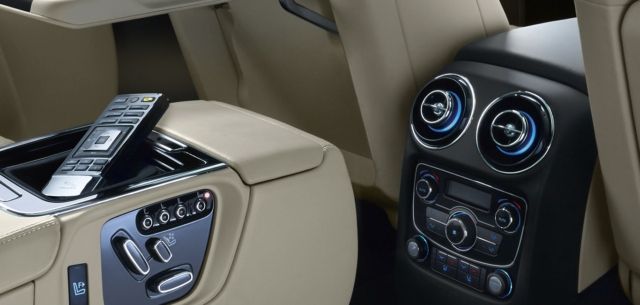What in-car technology will we be seeing in the near future?
The automotive industry is constantly changing and updating as automotive manufacturers strive to develop innovative vehicle technology. Whether it’s making sure that drivers have a safe and comfortable journey or ensuring that the car is designed with eco-friendliness in mind, we have seen some truly ground-breaking tech innovations in recent years. But where is the industry heading next and what new developments could we be seeing in the future? We investigate the matter with the help of Grange, retailers of luxury vehicles including Lamborghini.
Driver Comfort
1. JLR’s Weather Adaptation Technology
Weather adaptation technology is the latest step in improving driver comfort and the overall driving experience. The system allows cars to autonomously adapt to weather changes and situations to make adjustments to drivetrain, suspension, traction control and climate control for optimum efficient driving.
The system is said to be able to connect to present and future weather data via telematics and GPS to sensibly adapt both inside the cabin and around the exterior. One feature suggests that the system will automatically close your vehicle windows if it senses that rain is forecast. Onboard rain- and terrain-sensing mechanisms will be used to control the temperature, pressure and humidity inside the cabin, whilst interior and exterior lighting will be altered depending on the circumstances.
AI & autonomous tech
Manufacturers have been focusing on developing autonomous tech for a number of years. Most manufacturers now offer self-driving technology as part of their latest models – with most used to improve road safety.
1. The Lane Keeping System
This intelligent design improves safety by making sure you keep to your lane on the motorway. When motorway driving, it’s vital that you stay firmly in your lane, unless you are overtaking. This system alerts you with a vibration on the steering wheel if your vehicle is unintentionally edging out of its lane – and in circumstances when the vehicle thinks you are reacting too slow, the vehicle will take control and provide steering torque to divert you back into the safe space on your lane. This is a safety feature to prevent drivers from veering out of their lane on motorways and dual carriageways where drivers around them are driving at high speeds.
2. BLIS – Blind Spot Information System
This system is designed to let drivers know when there is another vehicle in their blind spot so that they can switch lanes easily and safely. When a vehicle enters your blind spot zone, the BLIS system will alert you. The detection area is on both sides of your vehicle, extending rearward from the exterior mirrors to approximately 10 feet (3 meters) beyond the bumper. The system alerts you via a small light on your side wing mirrors – when there is a vehicle in your blind spot zone, the light will illuminate. When your blind spot zone is clear, the light will switch off.
3. Speed keeping system
If you’ve accidently exceeded the speed limit, this clever system will let you know. By using GPS, the system is able to detect the vehicle location and reference this with a digital road map that is programmed with speed limit information for each road. The system can be used as an active speed limiter whereby it can take control of the vehicle and reduce the speed when travelling above the speed limit. It does this by reducing the throttle signal. Additionally, the system is also fitted with a speed limiting function that increases the pressure on the accelerator when you exceed the speed limit, so that it is harder to accelerate and break the speed limit.
Eco-friendly tech
1. Eco-Pedals
Nissan already use the eco-pedal in their flagship electric car, the Nissan Leaf. The electric automobile not only has double the mileage range of its previous model equivalents, but the one-pedal driving system allows for the accelerator pedal to be transformed into a multifunctioning e-pedal at a touch. The e-pedal functions as a start, stop, accelerate and breaking pedal when activated. Suitable for 90% of urban driving, the system means that the car will slow to a halt by itself with the ability to hold itself on an incline without the need of the brake pedal.
This new pedal is even more eco-friendly than previous eco-pedals in Nissan’s range. Nicknamed the ECO-pedal system, the pedal controls the speed of acceleration to prevent revving up the engine. The level of fuel-efficient driving is displayed through a colour and flashing Eco-P lamp. According to Nissan, studies have proven that effective eco-driving with the ECO-pedal can contribute to an improved fuel efficiency by 5-10%.
2. Quick charging for EV’s
Manufacturers have been working on developing faster charging EV batteries for several years now and the new quick charging batteries are said to achieve full power in just 30 minutes. Researchers claim they could have developed an ‘instantly rechargeable’ method that recharges an electric battery in the same time as it would take to fill a gas tank – a solution to the biggest headache of electric vehicles. This would revolutionise the EV industry, as battery life and its charge has been the biggest challenge for the industry.
Electric vehicles are set to become much more widespread on a global scale, so we can expect significant progress in the future. According to the National Grid, peak demand for electricity could increase by 50%, if and when the nation switches to electric vehicles – which could be sooner than we think now that a new pan-European EV charging network has been announced too. IONITY, set up by the BMW Group, Daimler, Ford, and the VW Group with Audi and Porsche, launched the network early November 2017, and plans to work on 20 ultra-rapid charging points has already begun as they begin their EV charger installation plan to target for 400 points across Europe by 2020.

